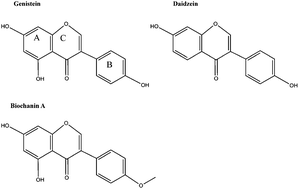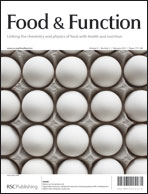Anti-diabetic functions of soy isoflavone genistein: mechanisms underlying its effects on pancreatic β-cell function
Abstract
Type 2 diabetes is a result of chronic insulin resistance and loss of functional pancreatic β-cell mass. Strategies to preserve β-cell mass and a greater understanding of the mechanisms underlying β-cell turnover are needed to prevent and treat this devastating disease. Genistein, a naturally occurring soy isoflavone, is reported to have numerous health benefits attributed to multiple biological functions. Over the past 10 years, numerous studies have demonstrated that genistein has anti-diabetic effects, in particular, direct effects on β-cell proliferation, glucose-stimulated insulin secretion and protection against apoptosis, independent of its functions as an estrogen receptor agonist, antioxidant, or tyrosine kinase inhibitor. Effects are structure-specific and not common to all flavonoids. While there are limited data on the effects of genistein consumption in humans with diabetes, there are a plethora of animal and cell-culture studies that demonstrate a direct effect of genistein on β-cells at physiologically relevant concentrations (<10 μM). The effects appear to involve cAMP/PKA signaling and there are some studies that suggest an effect on epigenetic regulation of gene expression. This review focuses on the anti-diabetic effects of genistein in both in vitro and in vivo models and potential mechanisms underlying its direct effects on β-cells.


 Please wait while we load your content...
Please wait while we load your content...